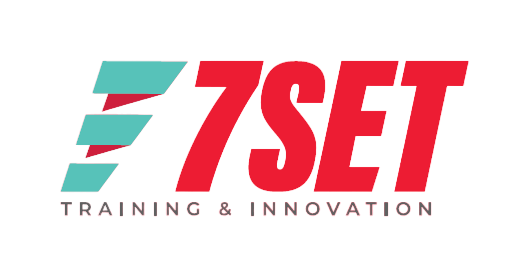Forget endless to-do lists and scattered goals. In Ethiopia’s vibrant business landscape, achieving success demands smarter project management. This is where Project Portfolio Management (PPM) becomes your guiding light, transforming scattered efforts into a cohesive tapestry of impact.
Imagine your projects as woven threads, each contributing to the stunning visual tapestry of your organization’s strategic vision. PPM isn’t just about managing individual threads; it’s about synergizing them to create a masterpiece of achievements aligned with your Ethiopian aspirations.
Global Impact and the Power of PPM
Statista reveals that the global Portfolio Management market hit 3.19 billion GBP in 2019, with a projected surge to 3.29 billion GBP by 2024. PPM provides organizations with a structured framework for evaluating, selecting, managing, and monitoring projects. In this blog, we’ll dissect the essence of Project Portfolio Management, unraveling why it’s pivotal, and how it can elevate your work and decision-making processes. Let’s embark on a journey to elevate your Project Management to new heights!
Table of Contents
1. Fundamentals of Project Portfolio Management
a. What is Project Portfolio Management?
b. Key Concepts in Project Portfolio Management
2. Five Essential Project Portfolio Management Processes
3. Industries and Companies Benefiting from Project Portfolio Management
4. Benefits of Project Portfolio Management
5. Conclusion
Fundamentals of Project Portfolio Management
A. What is Project Portfolio Management?
At its core, PPM distinguishes individual projects from Project Portfolios. A project is a temporary undertaking with specific goals, scope, and a set timeframe. In contrast, a project portfolio is a collective management of projects as a single entity. PPM shifts the focus from isolated project management to overseeing a coordinated set of projects, ensuring alignment with organizational goals.
B. Key Concepts in Project Portfolio Management
PPM involves crucial concepts guiding decision-making:
a. Strategic Alignment:
Aligning projects with organizational goals.
b. Resource Optimization:
Efficient allocation of resources.
c. Risk Management:
Proactive identification and mitigation of risks.
d. Data-Driven Decision-making:
Reliance on data for informed choices.
e. Continuous Improvement:
Ongoing, iterative enhancement of the portfolio.
Five Essential Project Portfolio Management Processes
1. Change Management:
– Identification and prioritization of change requests.
– Evaluation within the context of business strategy.
2. Risk Management:
– Identification and mitigation of potential risks.
– Systematic approach to address uncertainties.
3. Financial Management:
– Efficient handling of financial resources.
– Demonstrating financial results in relation to business goals.
4. Pipeline Management:
– Ensuring a continuous flow of project proposals.
– Evaluation based on predefined criteria.
5. Resource Management:
– Efficient utilization of organizational resources.
– Ensuring allocation aligns with strategic goals.
Industries and Companies Benefiting from Project Portfolio Management
PPM is a versatile approach benefiting various industries:
– Information Technology (IT)
– Manufacturing and Engineering
– Healthcare
– Financial Services
– Telecommunications
– Government and Public Sector
– Construction
– Marketing and Advertising
– Pharmaceuticals and Biotechnology
– Education
– Energy and Utilities
– Retail
– Aerospace and Defense
Benefits of Project Portfolio Management (PPM)
PPM offers multifaceted benefits:
-Strategic Alignment:
Ensures projects align with organizational goals.
-Resource Optimization:
Efficient allocation of resources.
-Risk Mitigation:
Proactive identification and management of risks.
-Decision-making Improvement:
Informed decisions based on data.
-Enhanced Communication:
Improved transparency and collaboration.
-Clear Project Prioritization:
Prioritizes projects based on strategic importance.
-Efficient Resource Allocation:
Maximizes productivity and minimizes waste.
-Improved Accountability:
Enhances responsibility and results-oriented culture.
-Quality Control:
Maintains consistent standards across projects.
-Cost Control:
Identifies and addresses budget overruns early.
-Visibility and Reporting:
Real-time visibility into project status.
-Customer Satisfaction:
Aligns projects with customer needs.
-Enhanced Innovation:
Supports innovation through resource allocation
-Efficient Resource Allocation:
Maximizes productivity and minimizes waste.
-Improved Accountability:
Enhances responsibility and results-oriented culture.
-Quality Control:
Maintains consistent standards across projects.
-Cost Control:
Identifies and addresses budget overruns early.
-Visibility and Reporting:
Real-time visibility into project status.
-Customer Satisfaction:
Aligns projects with customer needs.
-Enhanced Innovation:
Supports innovation through resource allocation.
Conclusion
Understanding PPM is the compass guiding intelligent project management. PPM is more than a tool; it’s a guiding star, ensuring efficient resource utilization, strategic alignment, and overall success. By adopting PPM, organizations can achieve more with less, turning dreams and plans into tangible results. It’s the smart way to navigate the intricate landscape of project management, ensuring time, money, and energy are invested wisely. Unleash the power of PPM and elevate your projects to unprecedented levels of excellence.
Ready to unlock your path to project excellence? Explore our Project Management Courses and embark on a journey of transformation!

